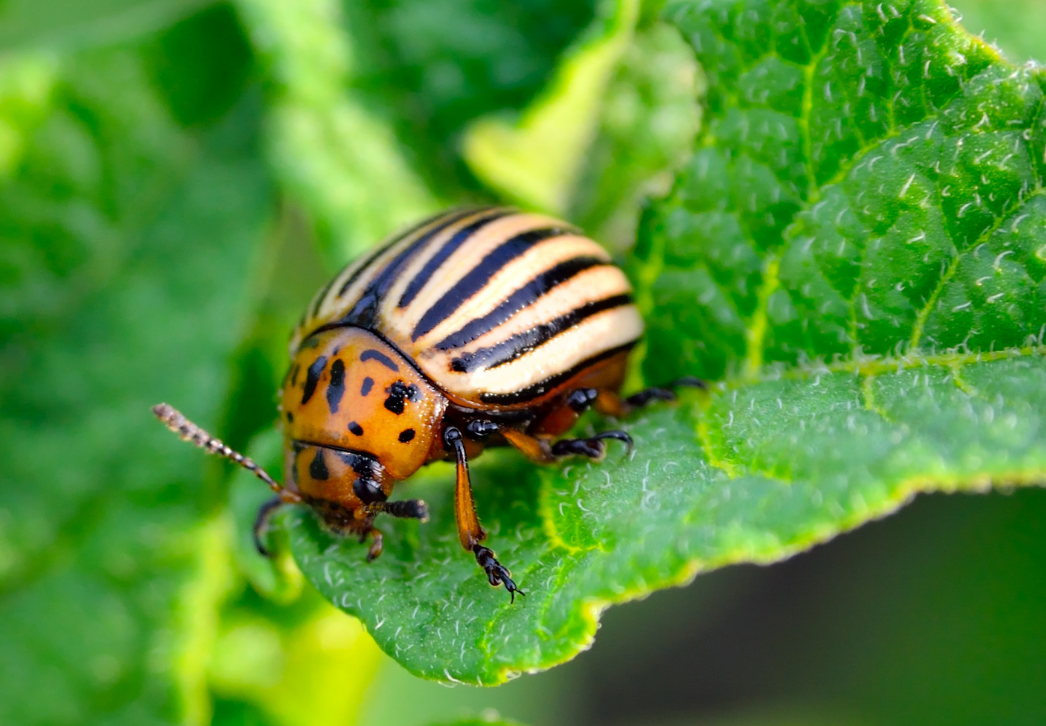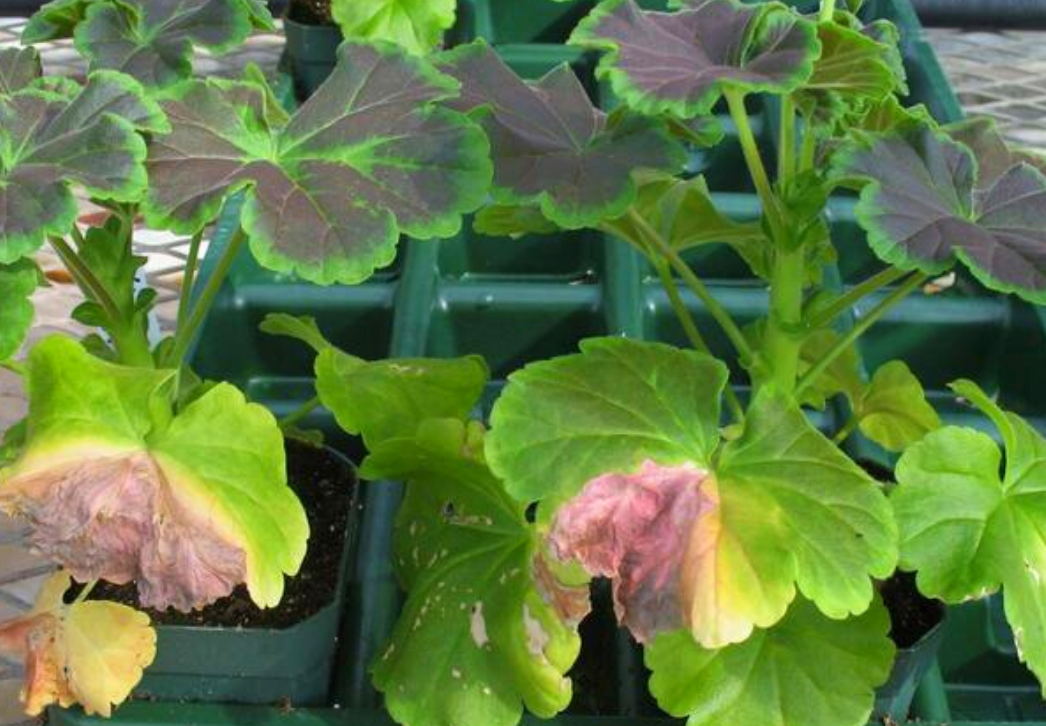|
|
Cool, cloudy weather settled over Wisconsin this week, bringing frost advisories for the central and northern counties. Below-normal temperatures slowed plant and insect development, though mostly dry conditions with overcast skies permitted fieldwork to continue at a rapid pace. Planting of the 2022 corn crop advanced to 61% complete, 10 days behind last year and three days behind the five-year average. Currently, 26% of the state’s corn acreage has emerged. Soybean planting advanced to 49% complete, nine days behind last year but even with the average. A few determined farmers in southern Wisconsin even began harvesting the first crop of alfalfa.
Rounds of rain and late-week thunderstorms are expected today, before dry weather with warming temperatures return for the first week of June.
__________________________________

Black cutworm larva | Purdue Extension
 
|
|
The primary black cutworm damage window for seedling corn has opened in far southern Wisconsin. Localized infestations are a distinct possibility over the next 3-4 weeks based on the late timing of corn planting this spring. While black cutworm outbreaks are sporadic and unpredictable, the key factors that influence outbreak potential are late tillage and planting, which allow for weedy pre-plant field conditions that provide preferred egg laying habitat. Other conditions favoring black cutworm egg laying are excess crop residue in no-till fields, low spots in a field, and corn planted after soybeans (vs. corn planted after corn).
Heavy moth flights in April and May also increase the risk of spring cutworm outbreaks. DATCP’s black cutworm survey traps have collected a cumulative total of 767 moths at 30 monitoring sites since April 1. Although this year’s total count is not particularly high compared to previous “high moth” years, most of the moths (70%) were captured in the last three weeks, indicating the damage window could extend through late June.
All corn acreage should be closely monitored for cutworm feeding or below-ground tunneling injury from emergence until the five-leaf stage. Bt hybrids and corn treated with seed-applied insecticides are at reduced risk of damage but could still be affected under heavy cutworm pressure. The economic threshold for black cutworm is reached if 3% of plants have been cut and larvae are still present in the field. Early and timely detection of cutworm infestations is critical for rescue treatments to be effective. |
|
 __________________________________
|
|
|
Codling moth trap catch | Steve Schoof NC State
  Low temperatures interrupted the start of the spring codling moth (CM) flight this week. A few cooperators in the DATCP apple pest monitoring network reported their first moths of the season May 16-22, but no site has reported a biofix as of May 25.
Orchards with high CM pressure or a large first flight of more than 10 moths per week traditionally apply the first larvicide spray at 250 degree days (base 50°) after biofix. Treatments applied at this threshold coincide with 3% hatch of first-generation larvae. However, if the initial flight is light or inconsistent due to cool temperatures or rain (as is the case for several reporting orchards), a stronger flight can occur after the earliest moths appear in traps. In this scenario, the first larvicide spray can be applied at 350 degree days from the initial biofix to coincide with 15% larval hatch, which will eliminate most of the new larvae before they enter fruits.
Questions about timing the CM biofix and first generation control window can be directed to DATCP Entomologist Krista Hamilton at Krista.Hamilton@wisconsin.gov.
  __________________________________
|
|
 Colorado potato beetle | Alexandrum79 flickr
  Home gardeners and potato growers can expect to see overwintered Colorado potato beetles on plants by the second week of June. Managing these early adults will lower egg laying potential and help reduce crop damage. For small to moderate-scale farms, control methods such as planting a trap crop two weeks in advance of the main crop and destroying the trap crop with a mechanical method, such as a soil chopper, can be effective in combination with other tactics. Crop rotation and relocating this year’s crop at least ½ mile from last year’s field (if practical) can also help reduce early-season pressure. This insect has developed resistance to several insecticides and effective control requires a varied approach that uses non-chemical methods.
Another familiar vegetable pest now appearing in gardens is the imported cabbageworm. Adult butterflies have been active since early May, and small larvae have become noticeable on cabbage transplants. Growers are encouraged to inspect gardens and larger cabbage plantings regularly for the yellow eggs laid on plants and velvety green caterpillars with a faint yellow longitudinal stripe. The economic threshold for this pest in cabbage is 30% infestation at the transplant-to-cupping stages.
Routine inspection of seedling and recently transplanted vegetables for evidence of black cutworm feeding is also encouraged since larvae are reaching the most damaging plant-cutting stages. Cutworms feed on the stems of young plants at the soil line and can be destructive where transplants are planted through black plastic or a similar weed barrier. These barriers provide a protective covering for cutworms, making them more difficult to control. Beans, cabbage, carrots, celery, corn, lettuce, peas, peppers, potatoes, and tomatoes are all at risk of injury.
  __________________________________
|
|
 Wedge-shaped Xanthomonas lesions
Nancy Gregory, University of Delaware
  Two geranium samples recently tested at the DATCP Plant Industry Lab were diagnosed with Xanthomonas bacterial blight, caused by Xanthomonas hortorum pv. pelargonii. The varieties affected were ‘Savannah Lavender Splash’ and ‘Dynamo Orange.’
Symptoms include wilting leaves, yellow to tan v-shaped lesions between leaf veins, water-soaked spots on leaf undersides, and leaf senescence. All of these symptoms overlap with those of Ralstonia solanacearum race 3 biovar 2, which is a USDA Select Agent pathogen. This particular Xanthomonas bacterial blight infects only zonal, ivy, Regal, Martha Washington, and cranesbill geraniums.
Recommendations for controlling and preventing the spread of this bacterial blight are to:
- Scout geraniums regularly for symptoms
- Isolate newly arrived geraniums
- Disinfect work surfaces and tools
- Send in symptomatic plants for testing
Licensed nursery growers or dealers who suspect geraniums may be infected with Xanthomonas blight should contact DATCP’s nursery program at (608) 224-4572 or DATCPnursery@wisconsin.gov. Gardeners, florists and retail store customers may send samples to the UW-Madison Plant Disease Diagnostics Clinic for testing.
  __________________________________
|
|
|
|